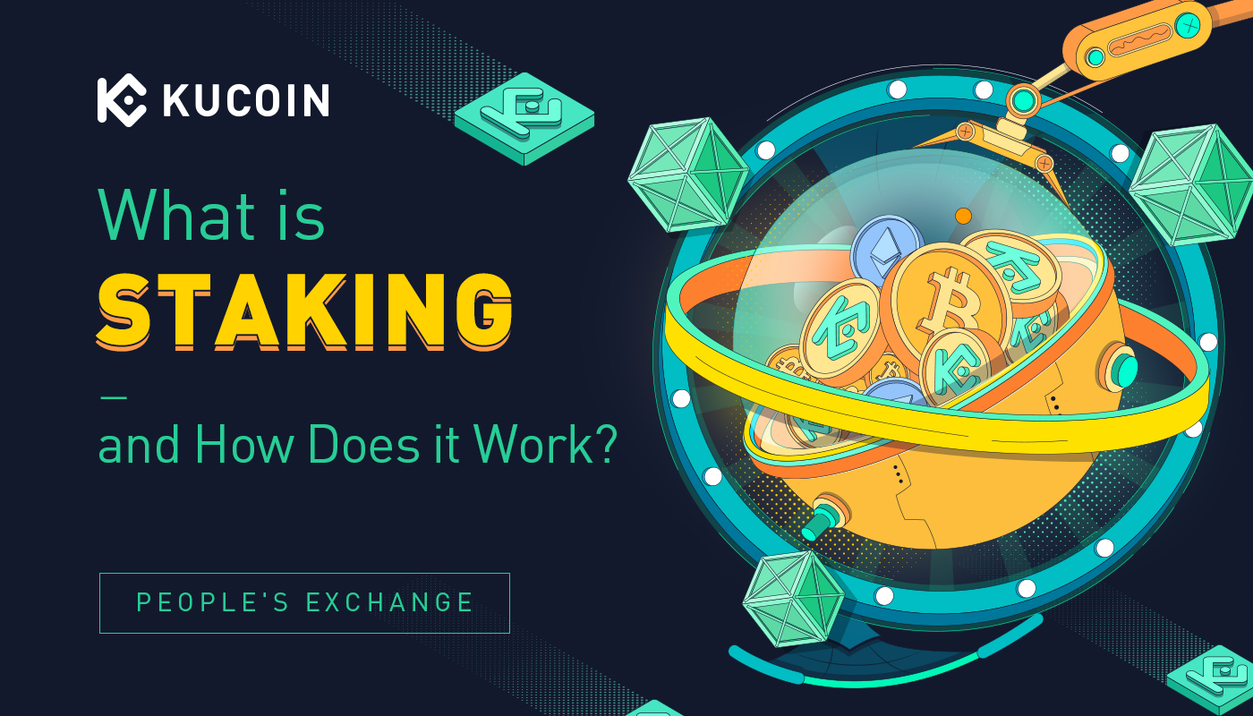Cryptocurrency staking, a less energy-intensive alternative to the Proof-of-Work consensus mechanism, involves locking up crypto tokens to participate in transaction validation.

In the exciting, ever-evolving world of digital assets, Bitcoin emerged as the pioneer, first surfacing in early 2013. While it proved revolutionary, critics voiced concerns about the environmental impact of crypto mining, a process that, by design, consumed considerable energy. This sparked a debate around the sustainability and practicality of the Proof of Work (PoW) consensus mechanism. To address these issues, various alternatives were proposed, the most prominent of which is the concept of crypto staking.
Unpacking Cryptocurrency Staking
Cryptocurrency staking has emerged as a hot topic in recent months, particularly in light of Ethereum’s announcement of a significant change. Ethereum, the second-largest cryptocurrency by market capitalization, declared a switch in its consensus algorithm from PoW to the Proof-of-Stake (PoS) blockchain network. This transformative move is a central feature of the eagerly anticipated Ethereum version 2.0 upgrade.
Staking, in simple terms, is a process where a cryptocurrency holder locks up a certain number of their tokens to actively participate in the validation of new transactions. This locked-in period, known as the ‘lockup period’, is typically set for a specific duration. Essentially, staking is another method of mining cryptocurrencies. The stakes, or locked-up tokens, bolster the security of blockchain networks and assist in transaction verification.
Those who opt to stake their crypto holdings can expect to receive rewards that are commensurate with the number of their staked tokens or coins. However, it’s important to note that staking is exclusively feasible on blockchains that utilize the PoS consensus algorithm. These PoS blockchains offer security levels comparable to PoW blockchains. Still, they truly distinguish themselves through a remarkable feature: significantly lower energy consumption.
The Origins of the Proof-of-Stake (PoS) Consensus Mechanism
The advent of the Proof-of-Stake mechanism can be traced back to Sunny King and Scott Nadal. This duo first introduced the PoS mechanism in their 2012 project, Peercoin, where it served as a robust framework to assure network security.
Explore Staking Options on KuCoin
A Closer Look at the Staking Process
From the perspective of a typical user, staking might seem quite straightforward: simply lock their crypto assets in a wallet to earn rewards. It’s a bit like a high-tech savings account, where you earn interest on your investment, in this case, the reward for participating in transaction verification.
To ensure the integrity of the stakers, the funds are locked. If a validator decides to act dishonestly, they face penalties. The severity of these penalties varies, depending on the specific algorithm in use.
Successfully and accurately validating a transaction typically results in rewards, often paid out as additional tokens or coins of the staked asset. However, some blockchains may pay out the rewards in a different coin.
Staking Pools Explained
A staking pool is akin to a collective of coin holders who combine their resources to improve their chances of being selected as block validators. Staking pools often accrue rewards higher than what individual stakers might obtain, and these rewards are then distributed proportionally based on each participant’s contributions to the pool.
Are Staking Pools Beginner-Friendly?
Absolutely, staking pools are known to be extremely beginner-friendly. They usually set a very low threshold for the minimum amount of investment required to join the pool. Furthermore, most pools offer flexible terms, allowing members to withdraw their staked assets to a crypto wallet when it suits them best.
Go to KuCoin’s Official Website
The Delegated Proof-of-Stake (DPoS) Mechanism
The Delegated Proof-of-Stake (DPoS) mechanism, brought to life by Daniel Larimer in 2014, stands as an alternative version of the standard PoS. Initially incorporated in the BitShares blockchain, it quickly gained popularity and was subsequently adopted by several other cryptocurrencies, including Steem and EOS. In the DPoS system, users vote using their coin or token balances, with the number of votes depending on the number of their tokens or coins.
The Rising Popularity of Soft Staking
Introduced by the KuCoin exchange in July 2019, Soft Staking is a unique concept that enables users to enjoy the benefits of staking without the need to lock up their funds. This innovative approach quickly attracted the interest of over 300,000 users.
Soft staking offers daily rewards to crypto investors, thereby eliminating the need to lock up their crypto for an extended period. Interest payouts to stakers are calculated using an “effective daily interest” rate.
A Glance at Cold Staking
Cold staking is an alternative staking method where the staking process is carried out offline. It works similarly to normal staking, except that you stake your coins in an offline wallet, such as a hardware wallet. However, one major difference is that cold staking does not have the option of joining a pool.
Explore Staking Options on KuCoin
Why Should You Consider Cold Staking?
The primary advantage of cold staking is the security of your funds. Offline wallets like hardware wallets offer a higher level of safety as they aren’t connected to the Internet and thus, can’t be hacked.
Conclusion
Proof-of-stake is a significant improvement over the energy-intensive proof-of-work algorithm. Through the PoS network, crypto users can contribute to a less polluted environment while accessing their staking rewards more easily and quickly. With reduced barriers to entry, staking is particularly beneficial for newcomers in the world of cryptocurrencies and those with small crypto holdings. Start staking through KuCoin Earn on the Kucoin exchange and earn rewards while you sleep!
Go to KuCoin’s Official Website
Please click "Introduction of KuCoin", if you want to know the details and the company information of KuCoin.






Comment by jetonwhy
February 16, 2025
Anyone else finding it weird that Deriv only allows deposits through Jeton and not bank transfers? They’ve removed crypto too, so now it’s just cards and Jeton. Kinda frustratin...